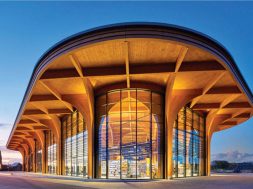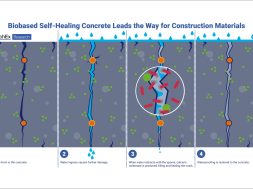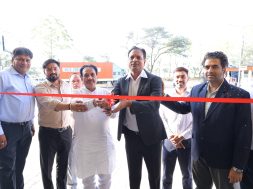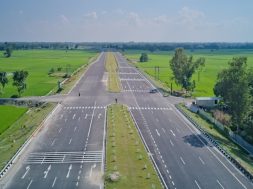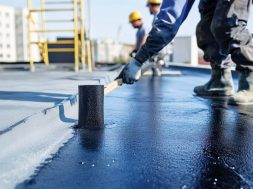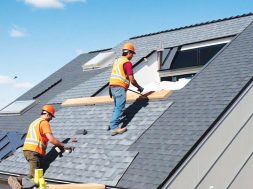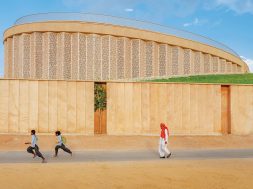Innovating fenestration for enhanced energy efficiency and sustainability

“This story discusses how the world of fenestration has gone beyond the practical function of offering natural light and ventilation in buildings to embracing sustainability by balancing aesthetics. While fenestration components encompassing windows, doors, curtain walls, and skylights are pivotal in defining a structure’s visual identity, today, they are more considered elements influencing energy efficiency and occupant comfort.”
For architects, designing fenestrations involves an intricate fusion of form and function, carefully considering proportions, placement, and materials. Fenestrations define the structure and contribute to the ventilation of the space. While windows, skylights, and other architectural openings shape the aesthetics and functionality of a structure, when artfully and thoughtfully incorporated, they also influence its energy efficiency and occupant comfort.
Engineering energy efficiency in different structures
According to Ar. Pallavi Pashine, Founder and Principal Architect at Salankar Pashine & Associates, fenestrations require unique innovations for different structures, from residential bungalows and high-rise residences to sprawling commercial complexes. Doors and windows in residential structures must be strategically orientated to optimise solar gain during winters and minimise heat during summers. Innovative products such as low-emissivity (low-E) glass are a good choice to reduce heat transfer while allowing ample daylight to flood in. Incorporating solar-responsive or smart windows in designs that dynamically adjust their transparency based on sunlight. For regions with temperate climates, she suggests using innovative louvre systems integrated into windows to promote natural cross-ventilation and reduce reliance on mechanical systems.

Double-skin facades or interactive glazing systems are preferred for enhanced occupant comfort in commercial structures. Double-skin facades enhance energy efficiency by reducing heating and cooling loads while maintaining aesthetic appeal. Interactive technologies like smart tinting glass and thermochromic glazing dynamically manage light ingress based on external weather conditions.
Ar. Pallavi also highlights the preferred choice for achieving energy efficiency in high-rise structures, where factors like wind load and thermal performance affect energy performance. She suggests using high-performance curtain wall systems featuring double glazing as they can minimise heat transfer and withstand high wind pressures. Aluminium frames with thermal breaks improve insulation, preventing heat or cold from transferring through the frames.
Ar. Anil Badan, Founder & Principal Architect at Studio B Architects, also shares his views on energy-efficient fenestration solutions. While aesthetics can be a defining symbol of fenestration systems, factors like thermal insulation and acoustic performance should also be considered. Incorporating thermal breaks in aluminium frames reduces heat transfer, improving overall insulation. Vacuum-insulated glass offers exceptional thermal performance with thinner profiles, which is ideal for space-constrained designs. Anil also shares his thoughts on how doors and windows must be effectively designed to reduce noise pollution for the occupants. Advanced acoustic glazing solutions reduce noise transmission, ensuring tranquillity within homes, while laminated glass with sound-dampening interlayers is an effective solution for high-noise environments, opines Anil.
Buildings can be optimised for energy without compromising on the aesthetics. Using slim-profile frames in aluminium or steel maximises glass surface areas while maintaining structural integrity and enhancing aesthetic appeal and functionality. Floor-to-ceiling windows and expansive glass walls reduce the need for artificial lighting. Operable windows, often paired in symmetrical alignments, facilitate cross-ventilation, ensuring fresh air circulation and increasing occupant comfort. Homes in tropical regions can be designed to feature shaded fenestrations with deep overhangs to minimise heat gain, opines Ar. Sumit Dhawan, Founder and Principal Architect, Cityspace82’.
Both uPVC and aluminium offer superior energy efficiency. When optimally designed and properly sealed, these windows offer well-insulated indoor environments requiring lesser heating during winters and reduced air conditioner usage during summers. They are also an appropriate choice in terms of replacement and maintenance, ensuring stable indoor air quality and easy manufacturing, apart from being 100 percent recyclable. Using thermal break window frames prevents heat transfer into the built environment, which can be particularly useful in hot and humid regions.
Ensuring sustainability through innovative fenestration solutions
Fenestration systems are integral to achieving net-zero energy goals with passive design strategies. By optimising natural light and thermal insulation, they contribute to creating energy-efficient spaces. In urban environments, fenestration solutions drive innovations in adaptive facades. Dynamic systems that respond to environmental changes in real time are required to optimise energy efficiency and aesthetics. Greater energy efficiency directly translates to a lower carbon footprint since the products require lower electrical power usage. uPVC is a desired solution as it can reduce energy consumption by up to 30 percent.
According to Ar. Anil, fenestration systems are embracing sustainability in design to contribute to the planet. Advancements in glazing technology are revolutionising fenestration. High-performance glass solutions, like low-emissivity (low-E) coatings, triple glazing, and dynamic glass, enhance thermal performance and minimise energy consumption. Further, renewable materials like modified wood or recycled aluminium serve as eco-conscious materials for fenestration designs.
Cookie Consent
We use cookies to personalize your experience. By continuing to visit this website you agree to our Terms & Conditions, Privacy Policy and Cookie Policy.
